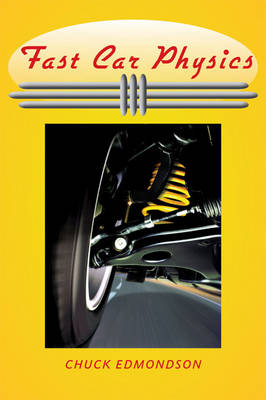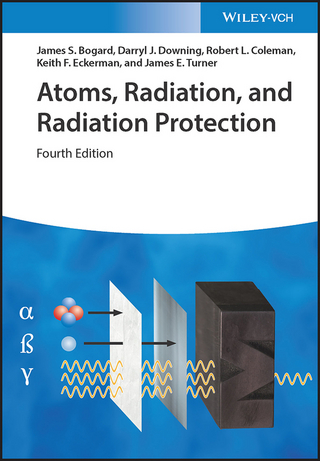
Fast Car Physics
Johns Hopkins University Press (Verlag)
978-0-8018-9823-5 (ISBN)
Revving engines, smoking tires, and high speeds. Car racing enthusiasts and race drivers alike know the thrill of competition, the push to perform better, and the agony-and dangers-of bad decisions. But driving faster and better involves more than just high horsepower and tightly tuned engines. Physicist and amateur racer Chuck Edmondson thoroughly discusses the physics underlying car racing and explains just what's going on during any race, why, and how a driver can improve control and ultimately win. The world of motorsports is rich with excitement and competition-and physics. Edmondson applies common mathematical theories to real-world racing situations to reveal the secrets behind successful fast driving. He explains such key concepts as how to tune your car and why it matters, how to calculate 0 to 60 mph times and quarter-mile times and why they are important, and where, when, why, and how to use kinematics in road racing. He wraps it up with insight into the impact and benefit of green technologies in racing. In each case, Edmondson's in-depth explanations and worked equations link the physics principles to qualitative racing advice.
From selecting shifting points to load transfer in car control and beyond, Fast Car Physics is the ideal source to consult before buckling up and cinching down the belts on your racing harness.
Chuck Edmondson is a professor of physics at the United States Naval Academy and an avid amateur race car driver. He was the engineer on the submarine filmed in The Hunt for Red October.
Preface
Acknowledgments
1. Torque or Horsepower? Finding the Shift Points
1.1. Acceleration and Newton's Second Law
1.2. Velocity, Speed, Rotation, and Engine rpm
1.3. The Car, Horsepower, and Torque
1.4. Tire Markings
1.5. Calculations
1.6. First Gear, It's All Right. Second Gear . . .
1.7. Summary
2. Horsepower, 0 to 60 mph, and the Quarter Mile
2.1. Horsepower
2.2. How Does Drag Force Affect Shift Points?
2.3. Gear Ratios
2.4. Calculating 0 to 60 mph Times
2.5. Assumptions and Results
2.6. What Is the Limit for 0 to 60 mph?
2.7. Aerodynamic Drag
2.8. Correction Factors
2.9. The Quarter Mile
2.10. Flat Torque Curves
2.11. Top Fuel Dragsters
2.12. Summary
3. Finding the Racing Line: Road Racing
3.1. The Traction Circle
3.2. Ninety Degree Right-Hand Turn
3.3. General Turn
3.4. Constructing a Track Model
3.5. Types of Turns
3.6. Type 1 Turn
3.7. Type 2 Turn
3.8. Type 3 Turn
3.9. Turning While Speeding Up
3.10. Summary
4. Basic Vehicle Dynamics: Load Transfer and Tires
4.1. Center of Gravity
4.2. Longitudinal and Lateral Center of Gravity
4.3. Height of the Center of Gravity
4.4. Load Transfer and the Static Stability Factor
4.5. Tires and Forces
4.6. Tire Construction
4.7. Wheels
4.8. Tires under Static Load
4.9. Tires under Dynamic Load
4.10. Contact Patch Friction
4.11. Material Properties and Testing
4.12. Longitudinal Force and Longitudinal Slip
4.13. Lateral Force and the Slip Angle
4.14. Aligning Torque
4.15. Summary
5. Steering and Suspension
5.1. More on Steering
5.2. Bicycle Model: Oversteer and Understeer
5.3. Wheel Alignment
5.4. Suspension Basics
5.5. Double A-arm or Wishbone Suspension
5.6. MacPherson Strut Suspension
5.7. NASCAR-Type Solid Rear Axle
5.8. Springs and Dampers
5.9. Shock Absorbers
5.10. Lateral Load Transfer: Advanced Approach
5.11. Correcting Handling Problems
5.12. Understeer Correction
5.13. Oversteer Correction
5.14. Summary
6. Green Racing
6.1. What Is Green Racing?
6.2. Regenerative Braking
6.3. Mechanical Energy Storage: Flywheels
6.4. Mechanical Energy Storage: Batteries
6.5. Mechanical Energy Storage: Capacitors
6.6. What Type of Hybrid Is It?
6.7. Parallel Configuration Hybrid: Toyota Prius
6.8. All-Electric Vehicles
6.9. Fuel Cells
6.10. Alternative Fuels
6.11. Summary
Conclusion
Get Off the Streets and Go Racing!
Suggested Reading
Index
| Erscheint lt. Verlag | 26.4.2011 |
|---|---|
| Zusatzinfo | 9 Halftones, black and white; 116 Line drawings, black and white |
| Verlagsort | Baltimore, MD |
| Sprache | englisch |
| Maße | 152 x 229 mm |
| Gewicht | 340 g |
| Themenwelt | Naturwissenschaften ► Physik / Astronomie ► Angewandte Physik |
| Technik ► Fahrzeugbau / Schiffbau | |
| ISBN-10 | 0-8018-9823-4 / 0801898234 |
| ISBN-13 | 978-0-8018-9823-5 / 9780801898235 |
| Zustand | Neuware |
| Haben Sie eine Frage zum Produkt? |
aus dem Bereich


